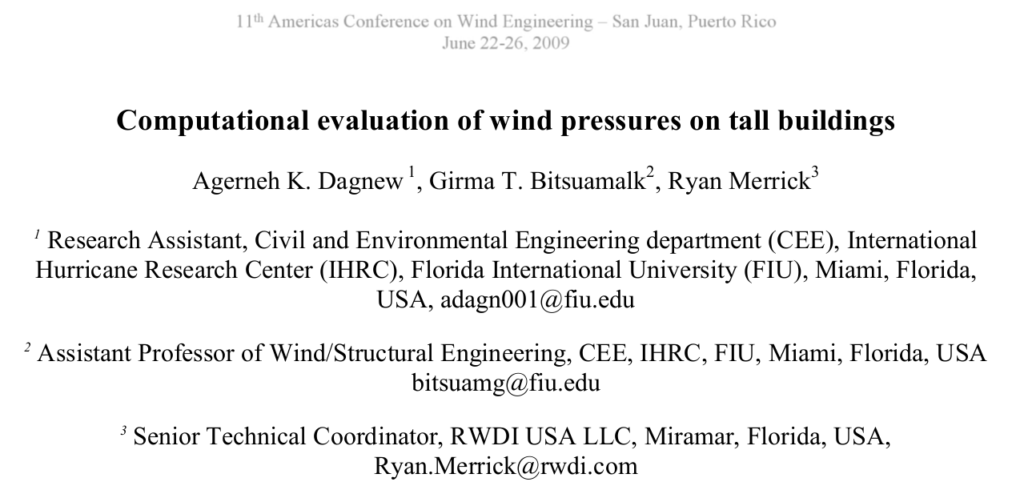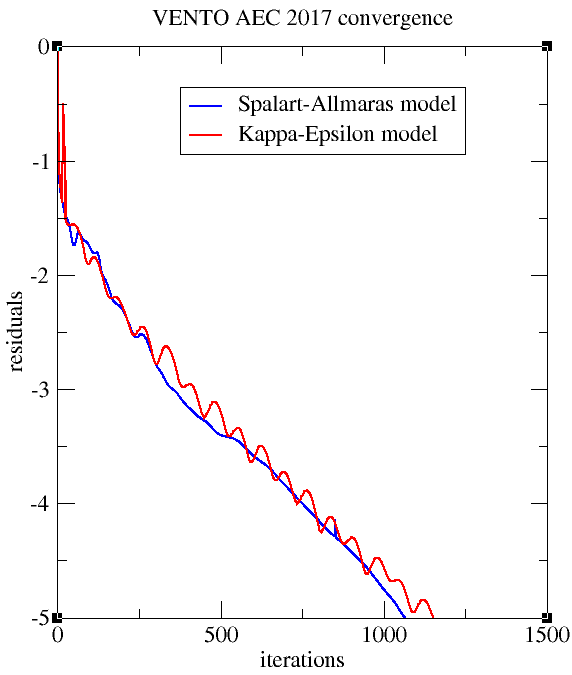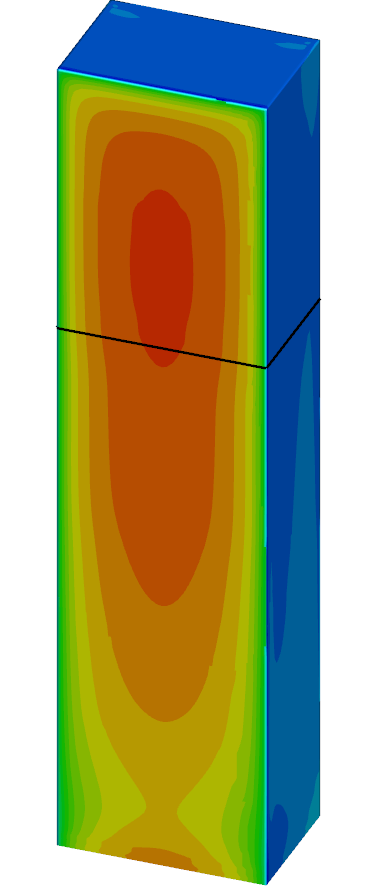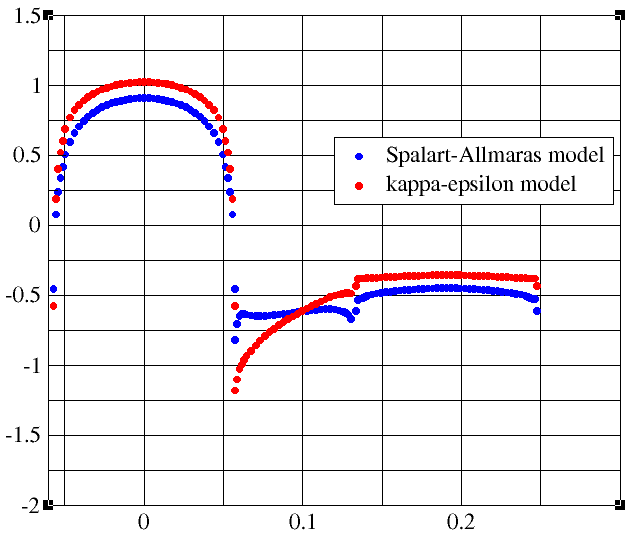Comparison of VENTO AEC with another CFD code as well as wind tunnel testing, using two different turbulence models.
The comparison refers to the Dagnew et al. paper from Florida University, presented at the 11th Americas Conference on Wind Engineering (Porto Rico 2009).

Introduction
Buildings, bridges, large span roof structures and other civil structures must be able to withstand the external loads imposed by nature, at least to the extent that the disastrous damage of natural force reduced to the acceptable limit. Wind is one of the major forces responsible for the catastrophic failure and loss of life.
Therefore, accurate evaluation and prediction of wind loads and proper mitigations are very important in reducing the adverse effects of wind in the built environment. In addition to the mean and the background (due to turbulent fluctuations) loads on rigid buildings, flexible structures will be subjected to resonant wind loads as well. The primary source of the along-wind motion is the pressure fluctuations in the windward and leeward faces due to the fluctuation in the approach flow and its interaction with the building.
Studies shows that for many high-rise buildings, the crosswind and torsional response may exceeds the along wind response in terms of both limit state and serviceability requirements. Nevertheless, most existing standards, only provides procedure for evaluation of along-wind effects. For complex cases, the standards refer to physical model testing in boundary layer wind tunnel (BLWT) facility.
Two mains methods are available to obtain wind pressure on buildings, CFD analysis or wind tunnel tests.
The VENTO AEC simulations
CFD users have mastered the use of the most popular and successful CFD software packages. They are still as complicated, cumbersome, and time-consuming as they were almost 20 years ago. This software is not adapted to the different needs and the environment of civil engineers.
Vento cfd developped VENTO AEC, first CFD software exclusively dedicated for architecture, engineering, and construction (AEC) professionals. It was tailored using more than 50 man-years of CFD experience to build a new CWE software that requires no previous knowledge of CFD. It delivers reliable, validated results with unparalleled ease-of-use and speed.
We will present here that VENTO AEC results are similar to other CFD results ot wind tunnel tests.
The analysis was carried out on a grid of 950k cells, with the two turbulence models.
The first one was Spalart-Allmaras (SA) and the second k-epsilon (k-eps).
The set-up time was 10 minutes for SA and 3 additional minutes for k-eps.
The simulation time on a 4-core desktop was 70 minutes for SA and 81 minutes for k-eps.
Comparison with reference CFD and wind tunnel
Conclusion
The Kappa-Epsilon model performance was very similar to the reference results with the same model. The Kappa-Epsilon model overpredicts the maximum Cp, and it generates a strong depression at the two sides.
The Spalart-Allmaras performance was also very similar to the reference LES (Large Eddy Simulation) performance. It was, as you may see, very close to wind tunnel data.
VENTO AEC is a great option for the wind computational evaluation of wind pressures on tall buildings.
If you want to know more, contact us.




